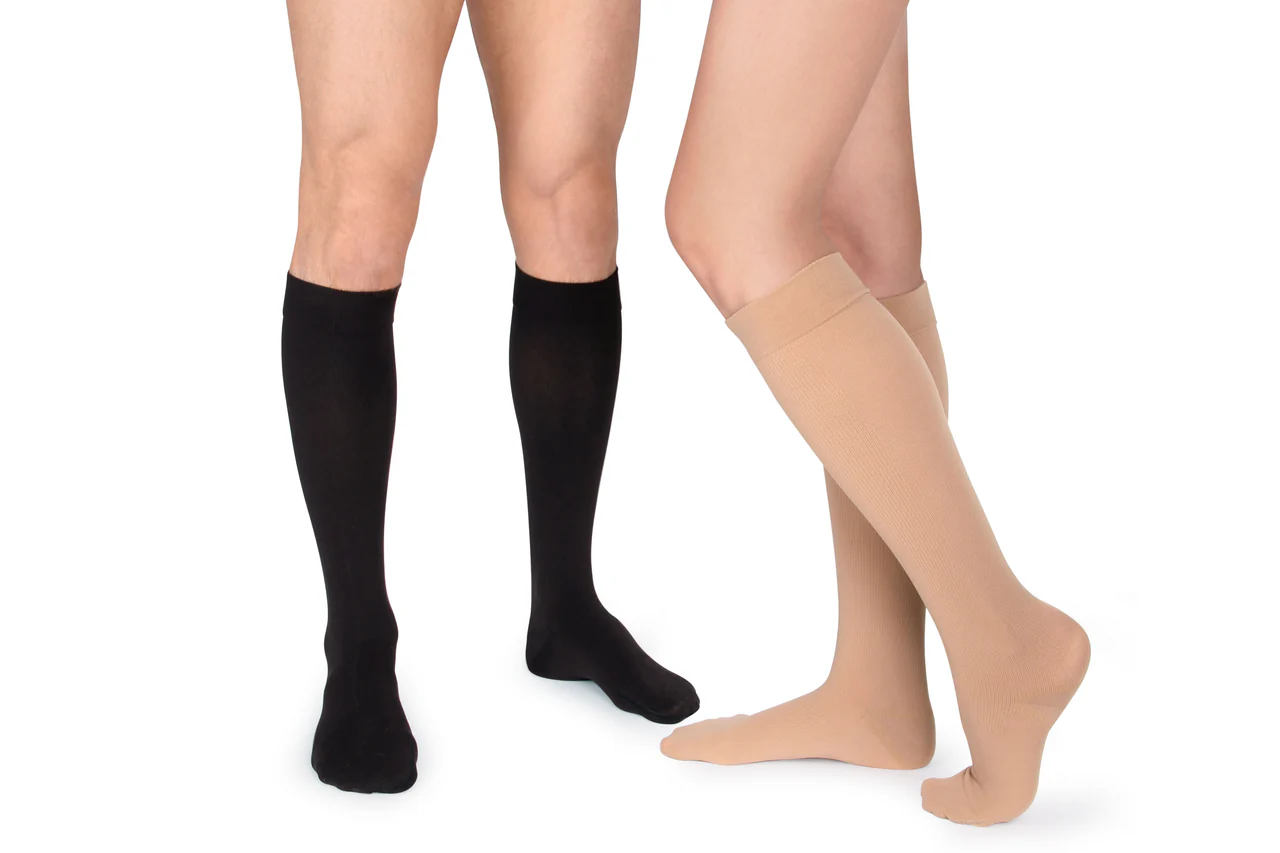
Compression stockings are available in various levels of compression, each designed to address specific health needs and conditions. Choosing the correct compression level is crucial for achieving the desired therapeutic benefits.
Compression levels are measured in millimeters of mercury (mmHg), which indicates the amount of pressure exerted by the stockings. This unit of measurement is commonly used to quantify pressure levels, similar to how blood pressure is measured.
Due to the flexible, form fit thread used in compression stockings, the compression dosage is a range. For example for a 15-20 mmHg compression, the pressure at the ankle would be between 15 mmHg to 20 mmHg.
The severity of venous disease determines the pressure required. There are four commnly recognized compression levels for various degrees of venous disease, explained in the table below.
DescriptionPressureApplicationMild Compression15-20 mmHgPrevention of tired heavy legs caused by prolonged standing and during pregnancy.Moderate Compression20-30 mmHgPronounced varicose veins, swollen legs, after inflammation of veins, after scelerotherapy or surgery, in the case of varicose veins durin g pregnancy. Firm Compression30-40 mmHgAfter deep vein thrombosis, constant leg swelling, after an open leg ulcer.Very Firm Compression40-50 mmHgVery pronounced swelling, lymphedema.
Compression stockings should be listed as graduated compression. This means that the greatest amount of compression begins at the ankle and decreases as it moves up the legs. This graduating knitting technique promotes blood flow back up to the heart.
Who it's for:
Benefits:
Who it's for:
Benefits:
Who it's for:
Benefits:
Selecting the appropriate compression level depends on your specific needs and medical condition. Here are some guidelines to help you make the right choice:
Understanding the different compression levels and their benefits can help you choose the right compression stockings for your needs. Whether you are seeking relief from minor swelling, managing varicose veins, or preventing serious vascular conditions, there is a compression level suited for your situation. Always consult with a healthcare provider to determine the most appropriate compression level for your health needs and to ensure you achieve the best possible outcomes for your leg health.